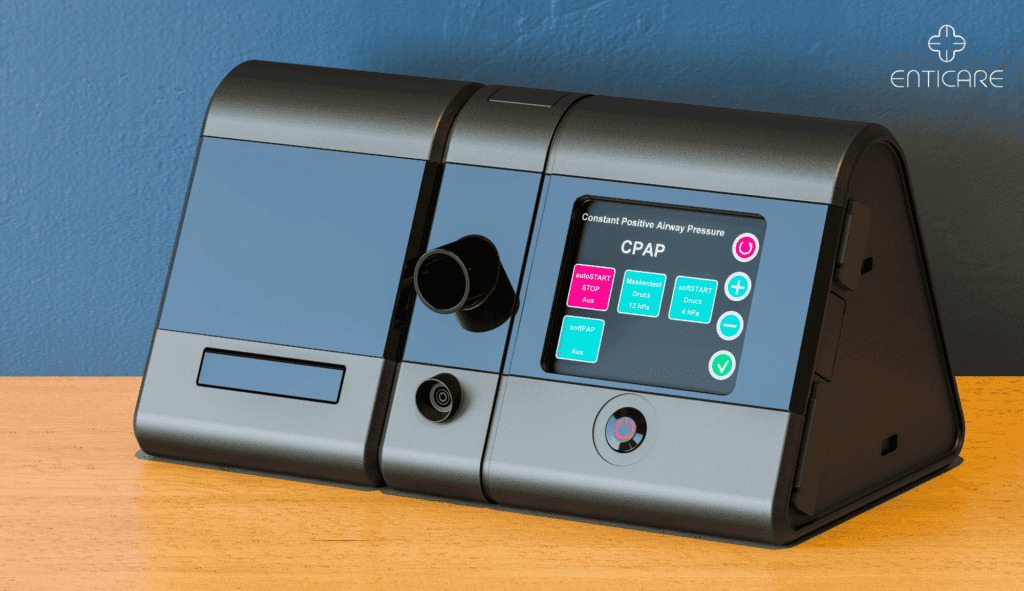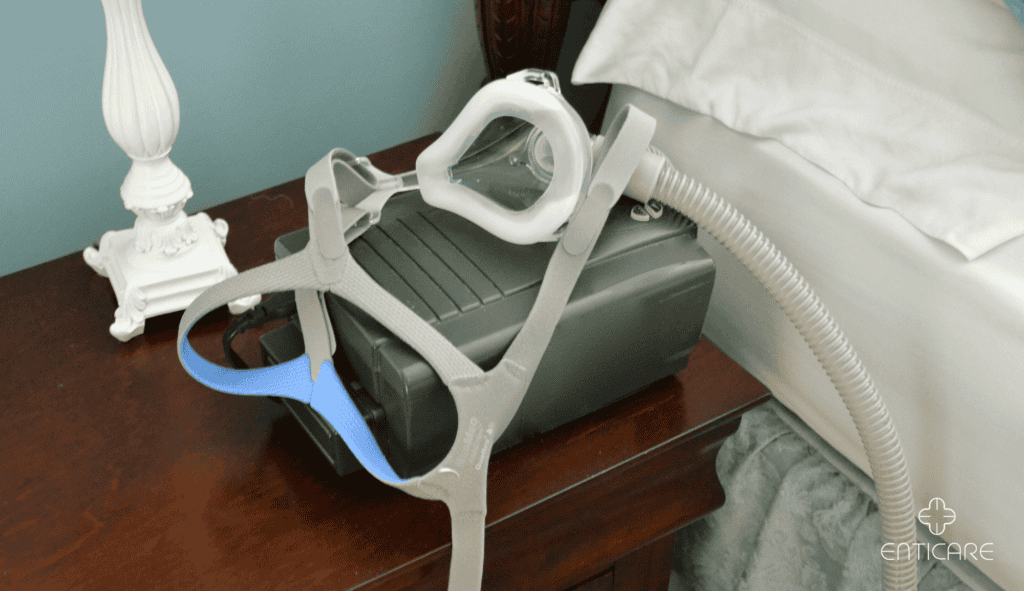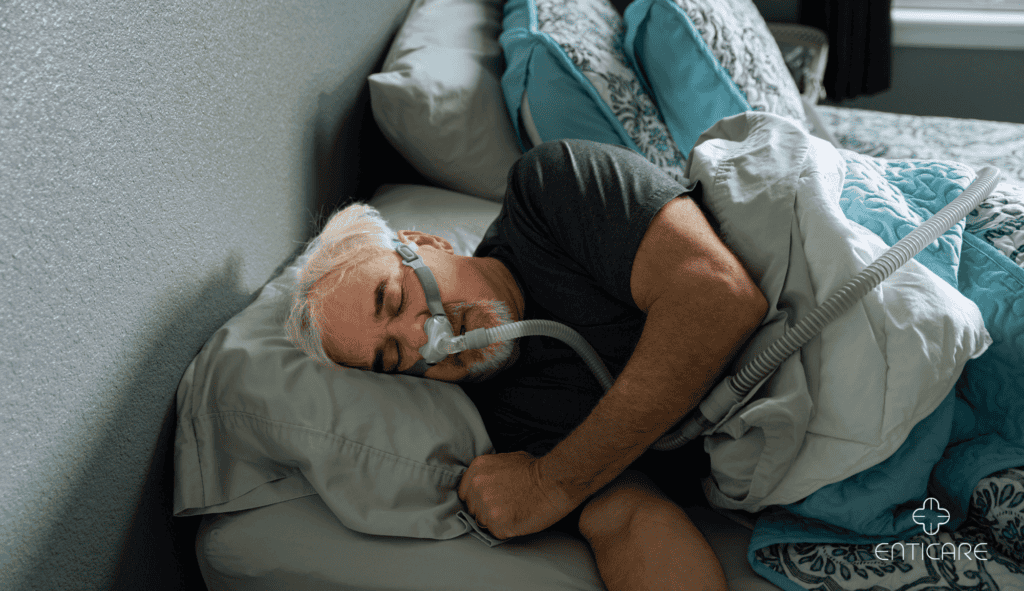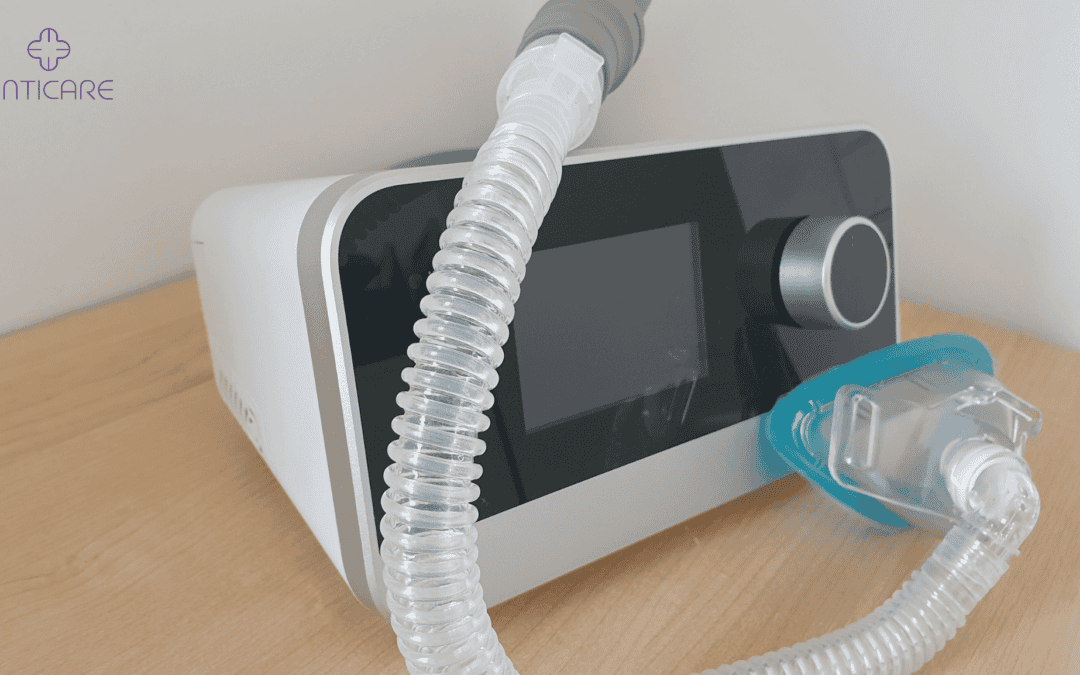For millions of individuals suffering from sleep apnea, Continuous Positive Airway Pressure (CPAP) machines provide a lifeline to restful, uninterrupted sleep. The CPAP device is crucial in treating obstructive sleep apnea (OSA) by improving sleep quality and respiratory function, though some users struggle to adjust to wearing a mask every night. You may feel discomfort, frustration, or anxiety about whether this will work for you.
Don’t worry — adjusting to a CPAP machine takes time, but with the right techniques, you can sleep comfortably and experience the benefits of restorative sleep. In this blog, we’ll explore the best strategies to help you acclimate to using a CPAP machine, sleep better, and get the most out of your therapy.

Step-by-Step Instructions for Setting Up a CPAP Machine
- Unpacking and Inspection: Start by carefully unpacking your CPAP machine. Inspect all components, including the mask, hose, and humidifier, for any damage or defects. Ensuring everything is in good condition will set the stage for effective sleep apnea treatment.
- Choosing a Location: Place your CPAP machine on a flat, stable surface like a nightstand or table near your bed. Make sure the machine is at least 3 feet away from walls or curtains to prevent any obstruction and ensure proper airflow.
- Connecting the Hose: Attach the hose to both the CPAP machine and the mask. Ensure the connections are secure to prevent air leaks, which can compromise the effectiveness of your CPAP therapy.
- Setting Up the Humidifier: If your CPAP machine includes a humidifier, fill it with distilled water up to the indicated level. Proper humidification helps prevent dryness in your nasal passages and throat, enhancing your comfort.
- Powering Up: Plug in your CPAP machine and turn it on. Verify that the machine is set to the correct pressure setting as prescribed by your doctor. This ensures you receive the optimal air pressure needed to keep your airway open during sleep.
Humidification and Powering Up
Humidification is an essential feature of CPAP machines, as it helps to moisturize the air and prevent dryness in the nose and throat. When setting up your CPAP machine, make sure that the humidifier is properly connected and filled with distilled water.
- Humidifier Settings: Adjust the humidifier settings according to your needs. Some CPAP machines come with adjustable humidifier settings, allowing you to customize the moisture level to your comfort. Others may have a fixed setting, so find what works best for you.
- Powering Up: Once you have set up your CPAP machine, turn it on and ensure it is functioning correctly. Listen for any unusual sounds and check for air leaks. A properly working machine will provide consistent air pressure, crucial for effective CPAP therapy.

Choosing the Right CPAP Mask: Comfort Starts Here
The mask serves as the direct point of contact between you and the CPAP machine. If it feels uncomfortable, you may struggle to fall or stay asleep. Finding the right mask is essential for a good night’s sleep. Finding the right mask is essential for a good night’s sleep when sleeping with a CPAP. The right mask should also be compatible with your CPAP device to ensure effective therapy.
Nasal Masks vs. Full-Face Masks
Each mask type offers distinct advantages. Nasal masks are smaller and typically more comfortable for individuals who don’t breathe through their mouths during sleep. Full-face masks, on the other hand, may work better for those who do.
Try different styles to determine what works best for your sleep habits and face shape. You may also need to adjust your pillow or sleeping position based on the type of mask.
Mask Fit and Sizing
Ensure your mask fits snugly but not too tight. A poorly fitting mask can cause air leaks, discomfort, and even skin irritation. Many CPAP providers offer sizing guides to help you find the perfect fit. Taking the time to adjust the mask before bed helps eliminate these common issues.
Consider Using CPAP-Friendly Pillows
Standard pillows may cause your mask to shift, leading to leaks and reduced air pressure. CPAP pillows, which are designed with cutouts for the mask, can help maintain a good seal and improve your sleep quality.
Adjusting Your Sleeping Position for CPAP Success
Your sleeping position significantly affects the comfort and effectiveness of your CPAP treatment. By aligning your posture with the device, you can minimize discomfort and maximize therapy.
Side-sleeping for Improved Airflow
Sleeping on your side helps keep your airways open and reduces the chance of air leakage from your mask. It’s also a natural position for reducing sleep apnea symptoms. Use a body pillow to support this position and keep your spine aligned.
Elevating Your Head
Elevating your head can further help treat sleep apnea by reducing airway obstruction. A wedge pillow or an adjustable bed allows you to raise your upper body slightly, improving airflow and reducing mask discomfort.
Avoiding the Supine Position (Back-Sleeping)
Sleeping on your back can cause the soft tissues in your throat to collapse, which obstructs airflow and negates the benefits of CPAP therapy. If you tend to sleep on your back, try using pillows to prevent rolling into that position during the night.

Dealing With Dryness and Discomfort: CPAP Maintenance Tips
CPAP machines deliver constant airflow, which can sometimes cause dryness and discomfort in the nose and mouth, but these issues can be managed effectively while treating sleep apnea. Incorporating simple adjustments to your CPAP setup helps you stay comfortable.
Using a Humidifier
Many CPAP machines come with an integrated humidifier. A humidifier adds moisture to the air, helping to prevent dryness in your throat, nasal passages, and mouth. Set the humidifier at a level that works best for you, and adjust it based on the season or room conditions.
Try Heated Tubing
If you live in a dry or cold climate, the air flowing through your CPAP machine can feel especially cold and dry. Heated tubing can warm the air as it moves from the machine to your mask, making it more comfortable and preventing condensation build-up, known as “rainout.”
Regular Cleaning
Keeping your CPAP mask, tubing, and humidifier clean not only helps prevent bacterial growth but also ensures you experience no unpleasant smells or skin irritation. Clean your equipment daily, and follow manufacturer guidelines to extend its lifespan.
Conclusion
With the right adjustments, you can sleep comfortably with a CPAP machine and enjoy the full benefits of this life-changing therapy. From finding the perfect mask to adopting relaxation techniques, every step helps you maximize the effectiveness of your CPAP and improve your quality of life.
If you’re still struggling with CPAP therapy or need personalized advice, it’s essential to work with a sleep specialist who can guide you through the process. Don’t wait to start your journey toward better sleep. Schedule an appointment with Enticare’s sleep experts today to get the help you need.
For more information about CPAP machine tips and tricks, check out this guide from the National Sleep Foundation. It offers further insights into overcoming common challenges associated with CPAP therapy.

